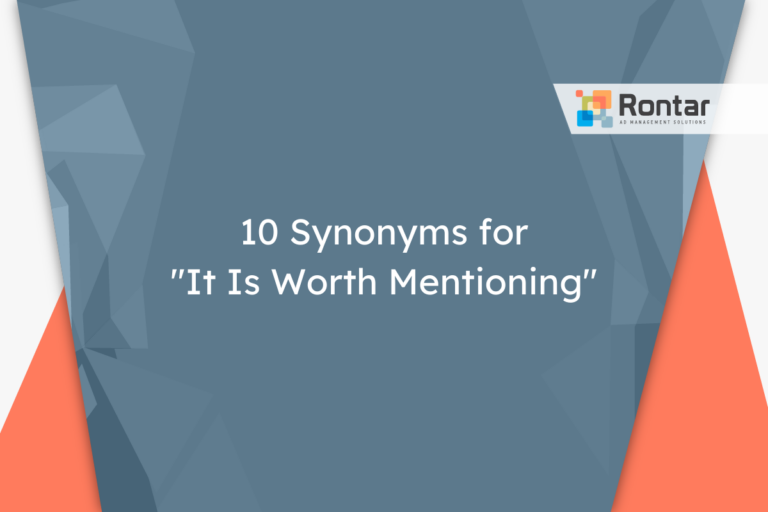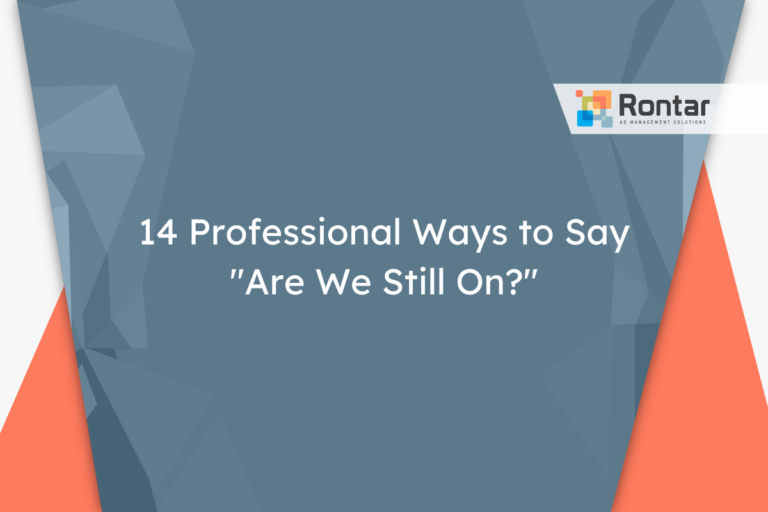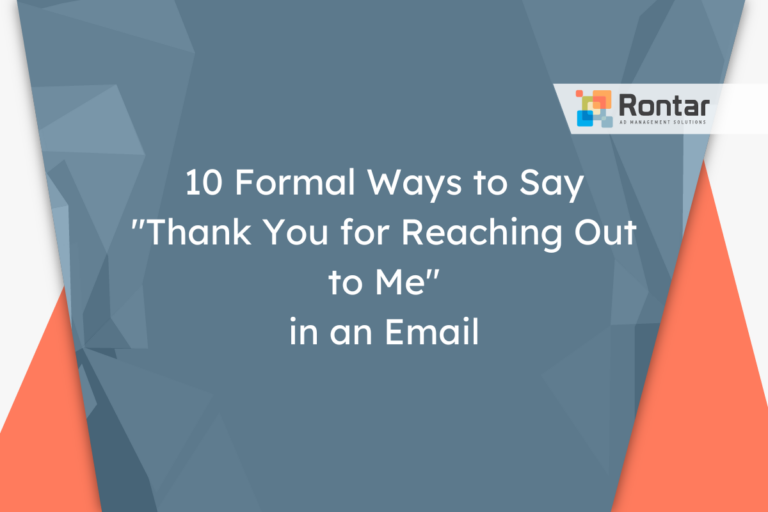10 Professional Synonyms for “I Would Love To”

Expressing eagerness or willingness in a professional setting requires careful selection of words to maintain the right balance between enthusiasm and formality. “I would love to” is a common phrase used in various contexts, but there are numerous other ways to convey a similar sentiment that are equally effective and may be more appropriate in certain professional situations.
This article explores ten professional alternatives to “I would love to”, offering insights into when and how to use them effectively to ensure your communication remains both polite and professional.
Is It Professional to Say “I Would Love To”?
The phrase “I would love to” carries a tone that can be described as professional, informal, and polite. Its appropriateness largely depends on the context in which it is used and the relationship between the individuals involved. Typically, this phrase conveys enthusiasm and a positive response to an offer or suggestion. It is especially fitting in scenarios where maintaining a friendly yet professional tone is crucial, such as in creative industries, informal business contexts, or when responding to an invitation or offer that you are genuinely excited about.
However, in very formal or traditional business settings, it might be more suitable to use a phrase that is strictly professional to maintain the expected level of decorum. Below is an example of how “I would love to” might be used in an email:
Dear Alice, Thank you for extending the invitation to me to participate in the upcoming marketing brainstorming session. I would love to contribute my ideas and learn from the team. Please let me know the date and time so I can make sure to be there. Looking forward to it, Michael
Here are the pros and cons of using this phrase:
Pros:
- Conveys enthusiasm and eagerness in a polite way.
- Helps to create a friendly and approachable tone in communication.
- Appropriate for building rapport in less formal business contexts.
Cons:
- May not be viewed as formal enough in certain professional settings.
- Could potentially be misinterpreted as overly casual in traditional industries.
- Some may prefer more traditionally professional language to establish credibility.
Choosing whether to use “I would love to” or an alternative phrase depends on the context of the communication and the desired tone. While it is a perfectly acceptable phrase in many situations, someone might opt for synonyms or alternatives in more formal contexts or when looking to project a very specific professional image. Using alternatives allows one to tailor their language to fit the audience and purpose of their communication more precisely.
10 Other Ways to Say “I Would Love To”
- I am keen to
- I am eager to
- I would be delighted to
- I am interested in
- It would be my pleasure to
- I am excited to
- I look forward to
- I am enthusiastic about
- Count me in for
- I’d be happy to
1. I am keen to
This alternative conveys a sense of eagerness and interest that is both professional and polite. It is especially formal enough to be used in written communications within most business contexts. When one opts for “I am keen to,” they demonstrate a proactive stance towards an opportunity or task, making it an excellent choice for expressing a strong interest in collaboration or participation. This phrase is particularly suited for professional settings where displaying enthusiasm and a positive attitude is key, yet a certain level of formality is expected.
Dear Kevin, Thank you for considering me for the project team. I am keen to bring my expertise in digital marketing to the table and contribute to our success. Best regards, Samantha
2. I am eager to
Similar to the first, “I am eager to” is equally professional and communicates enthusiasm. This phrase is slightly less formal than “I am keen to,” but it is still highly appropriate for professional settings. It’s a fantastic choice when you want to express sincere anticipation for upcoming projects, collaborations, or opportunities. “I am eager to” is best used when the sender wishes to convey their excitement in a way that is earnest and polite, without leaning too far into informality.
Dear Ms. Thompson, I have reviewed the upcoming project brief, and I am eager to contribute my skills to ensure its success. Warm regards, George
3. I would be delighted to
“I would be delighted to” adds a touch of warmth and personal enthusiasm while remaining decidedly professional and polite. This phrase carries a level of formality that makes it apposite for communications with clients, superiors, or in situations where an elevated degree of courtesy is beneficial. Its use suggests not only willingness but also pleasure in participating, making it optimal for acceptances or confirmations of tasks, invitations, or offers that one views positively.
Dear Dr. Larson, Regarding your request for a guest lecture, I would be delighted to share my insights on sustainable architecture with your students. Sincerely, Claire
4. I am interested in
“I am interested in” is best described as subtly enthusiastic and professional. It is slightly more informal than the previous alternatives but maintains a high level of politeness. This phrase works well when you want to express a genuine interest in an opportunity, project, or idea without overcommitting emotionally. It’s suitable for initial explorations of opportunities or when seeking more information before making a firm commitment.
Dear Mr. Brooks, After reviewing the preliminary project plans, I am interested in discussing how my team and I can contribute to its success. Sincerely, Olivia
5. It would be my pleasure to
“It would be my pleasure to” is a synonym that exudes a high level of formality and politeness, making it exceptionally suitable for responding to invitations or requests. This phrase emphasizes the pleasure derived from the act of participating or contributing, thereby conveying both enthusiasm and a professional willingness. Its use is particularly effective in messages where the sender wishes to highlight their positive attitude and readiness to be involved in a courteous and refined manner.
Dear Ms. Patel, Following our recent conversation, it would be my pleasure to assist in the upcoming fundraising event. Best wishes, Ethan
6. I am excited to
“I am excited to” is an alternative that communicates enthusiasm vividly yet remains professional. It is slightly less formal than some other options on this list, making it a great choice for industries or situations where a friendly approach is encouraged. This phrase is particularly effective when the sender wants to share their genuine excitement about upcoming possibilities, projects, or collaborations, in a manner that is both polite and engaging.
Dear Team, With the new project launch around the corner, I am excited to see the impact we can make in the market. Best, Liam
7. I look forward to
“I look forward to” is a synonym that strikes an excellent balance between professionalism, formality, and politeness. It is widely accepted in a broad range of professional contexts. This phrase is ideal for instances where you wish to express anticipation for future events, meetings, or collaborations, doing so in a way that is reserved yet clearly communicates eagerness and a positive outlook towards what’s coming next.
Dear Carol, Thank you for your email. I look forward to our meeting next week and discussing the project in more detail. Kind regards, Henry
8. I am enthusiastic about
Using “I am enthusiastic about” is a way to express a strong interest or excitement regarding a matter in a manner that is professional and polite. This phrase is slightly more formal than “I am excited to” and is suitable for when you want to convey a deeper level of engagement or commitment to a project, proposal, or opportunity. It’s an excellent choice for messages intended to show the sender’s substantial support or belief in the value of what is being discussed.
Dear Ms. Harper, As we gear up for the annual conference, I am enthusiastic about the opportunities it presents for our company. Yours faithfully, Derek
9. Count me in for
“Count me in for” stands out as a more informal yet still professional and polite alternative. It’s particularly suited to contexts where the sender and receiver have an established rapport. This phrase is ideal for team environments or peer-to-peer communications where expressing willingness or agreement in a more casual, yet enthusiastic manner is preferable. It articulates a strong commitment in a friendly tone.
Dear Alex, Just saw the email about the team building event. Count me in for the weekend retreat! Cheers, Jordan
10. I’d be happy to
“I’d be happy to” is a synonym known for its versatile use across both formal and informal settings, maintaining a professional and polite demeanor. This phrase is perfectly suited for situations where the sender wishes to affirm their willingness or acceptance with a positive and accommodating attitude. It is an effective choice when responding to requests, offers, or invitations, skilfully balancing enthusiasm with professionalism.
Dear Evelyn, Thank you for reaching out with your request. I'd be happy to provide the necessary documentation by the end of the week. Kind regards, Isaac
Final Thoughts
Choosing the right phrase to express eagerness or willingness in a professional setting is more than a mere question of preference; it’s about adapting to the context, respecting the formality of the situation, and conveying the right tone.
The ten alternatives to “I would love to” that we have discussed provide a range of options from formal to informal, allowing for flexibility in communication styles while maintaining professionalism. Each option has its unique nuances, making them suitable for different scenarios, from eager anticipation to polite willingness. By considering these alternatives, professionals can enhance their written and verbal communication, making sure their enthusiasm is conveyed appropriately without sacrificing the professional integrity of their message.
As with any aspect of professional communication, the key lies in selecting the phrase that best aligns with the message’s purpose, the relationship with the recipient, and the context of the conversation.






